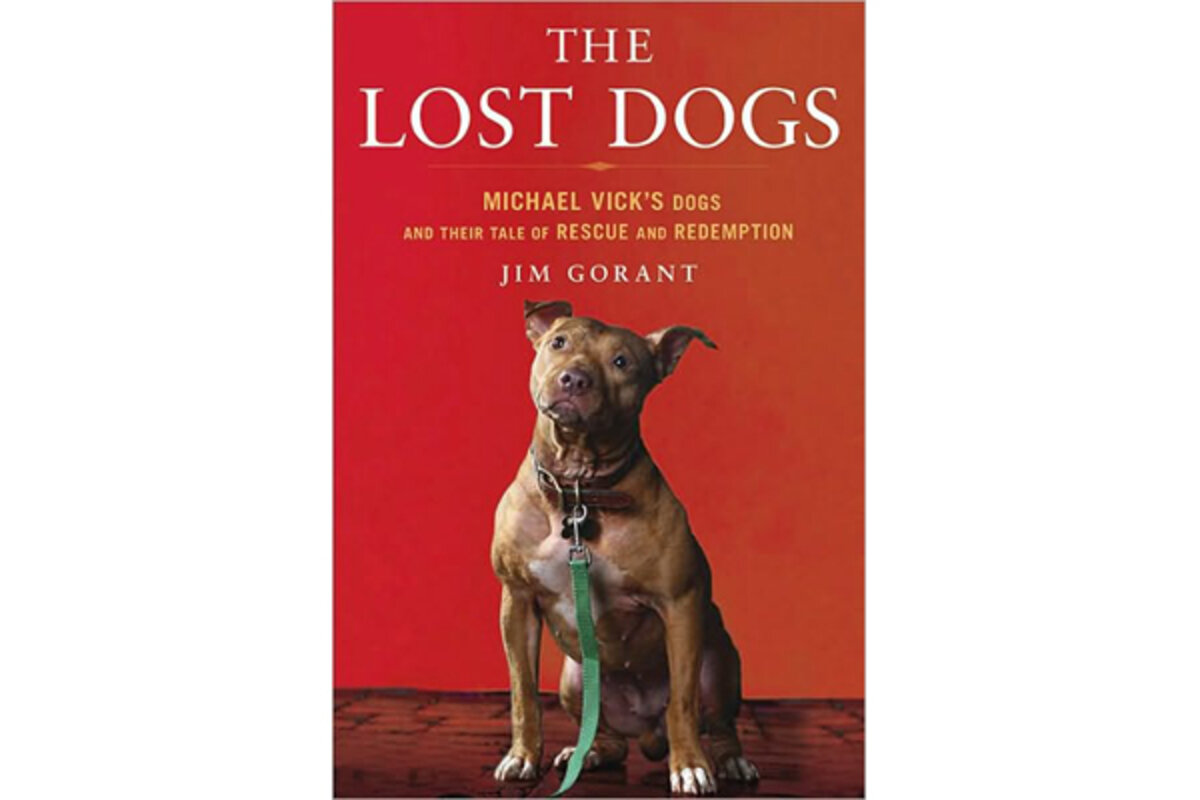The Lost Dogs
Loading...
Pit bulls have an image problem. Whether vilified as vicious baby-killers or embraced by moneymaking dogfighters – like football phenom Michael Vick, before his 2007 conviction – the breed is in trouble.
An online source estimates that 1.25 million pit bulls are euthanized yearly in the United States, and make up 30 to 50 percent of the dog-shelter population. Thanks to their bloodthirsty image as a ticking attack-bomb, pit bulls are least likely to be adopted.
In The Lost Dogs: Michael Vick’s Dogs and Their Tale of Rescue and Redemption, author Jim Gorant tells the story of the 66 dogs – 55 pit bulls – recovered from the “Bad Newz Kennels” owned by then-Atlanta Falcons quarterback Vick in Surrey County, Va.
If readers are surprised to find an entire book devoted to these dogs, here’s another upset: Our image of pit bulls couldn’t be further from the truth. The Staffordshire bull terriers, from which the American pit bull terrier descends, were known to be so gentle that in the 1800s they were called “nanny dogs,” ideal to be left alone with babies. The reason “Pete” the Staffordshire was chosen to join the 1930s TV comedy, “Our Gang”: He was great with the child actors. And remember Buster Brown’s smiling pal Tige?
Though bred hundreds of years ago to take down large game – deer, bear, boar – the pit bull’s ancestors evolved into working farm dogs. Their wide, strong jaw could latch and hold onto cattle until the butcher completed the slaughter. For a time these dogs were forced into “bull baiting,” a popular blood (and betting) sport in England until it was banned in 1835.
Gorant’s reporting shines in the first half of the book, as he recounts the efforts of federal agent Jim Knorr, a federal United States Department of Agriculture agent who, on the cusp of retirement, gets the call he had always hoped to answer: a chance to save dogs involved in a possible dogfighting ring. Despite the obstacles put in Knorr’s way by Virginia Commonwealth Attorney Gerald Poindexter, the Feds gained access to the Vick property. With the help of a dog-loving informant who took care of the property, Knorr and his team exhume the abused bodies of eight pit bulls and ship them to Georgia, where animal-forensic specialist Melinda Merck confirms the extent of the abuse. (This part of the book is harrowing to read.) Author Gorant drives home these horrors by taking us inside the heads of the dogs – an annoying device that nevertheless ramps up our anger at Vick, his crew, and all dogfighters – while breaking our hearts for the helpless victims. If you go into this story hating pit bulls, you will come out embracing them, or at least be willing to try.
The most enlightening part of this book, the history of the breed, fills only a handful of pages, and deserves deeper, more thoughtful consideration. How Spanky’s buddy “Petey the sweetie” could become a breed outlawed in more than 200 cities in the US is the elephant – er, terrier – in the room: How did the pit bull fall so far from grace? Gorant gives this question short shrift, despite having the perfect platform – an entire book about pit bulls – to tackle it head-on. Sadly, it’s a missed opportunity. How can we dismantle a misperception without understanding how it came to be?
Instead Gorant fills his final chapters with, at times, yawn-inducing details on the daily lives of the rescued dogs’ families, information we don’t need.
The good news remains: Though authorities were initially prepared to euthanize them all, or, if they were lucky, adopt out 10 percent (five dogs) as sociable, pet-worthy canines, amazingly most of the dogs proved extremely friendly. Only one had to be euthanized for being too violent, the result of years of inbreeding and mistreatment. Vick had to pay nearly $1 million for the dogs’ care.
Thanks to volunteers in Oakland, Calif., and elsewhere in the US, the dogs have found loving homes and, in some cases, new jobs. One handsome pit bull, Johnny Justice, helps out in “Paws for Tales,” a literacy program at San Mateo Public Library in which children build fluency by reading aloud in front of a nonjudgmental, patient dog.
“The Lost Dogs” shows us that goodness can be found in the places where we may least expect it.
Liz Brown lives in North Carolina with a loyal border collie who can herd errant chickens like no one’s business.





